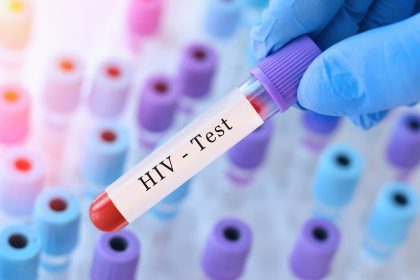The Food and Drug Administration recently announced a temporary suspension of its quality control program for testing milk and other dairy products. This unexpected pause comes during significant staffing transitions within the Department of Health and Human Services, with approximately 20,000 employees departing the organization that oversees the FDA.
The announcement has triggered discussions about food safety and regulatory oversight across the dairy industry. While officials maintain that dairy products remain safe for consumption, the situation warrants closer examination of what this means for consumers who regularly purchase and consume milk, cheese, yogurt, and other dairy items.
The suspended program explained
The FDA’s Division of Dairy Safety has temporarily halted its proficiency testing program for Grade “A” raw milk and finished dairy products. This program serves as a critical component in ensuring that testing laboratories accurately detect and measure potentially harmful compounds or pathogens in dairy products.
Grade “A” designation applies to liquid milk, cheese, yogurt, and other dairy items that come from farms and processing plants adhering to specific safety protocols. To maintain this classification, these products must undergo regular testing and monitoring.
The Food Emergency Response Network Proficiency Testing Program, established in 2004, coordinates and prepares approximately 170 food testing laboratories nationwide for potential emergencies involving contamination and foodborne illness outbreaks. Its primary function involves validating that these laboratories consistently produce accurate and reliable results when testing food products.
The suspension stems from operational challenges at the Moffett Center Proficiency Testing Laboratory, an FDA facility responsible for providing laboratory support and data analysis for the testing program. Without this support, the program cannot currently function as designed.
Impact on dairy safety monitoring
The FDA has indicated that the testing program will resume once transferred to another FDA laboratory. However, no specific timeline has been provided for this transition, leaving an undefined gap in this particular oversight mechanism.
During this interim period, state and federal laboratories will continue analyzing food samples, with the FDA maintaining its commitment to collaborating with states to ensure pasteurized milk supply safety. The established regulations remain unchanged, meaning dairy companies must still follow required pasteurization processes and safety protocols.
- The suspension affects laboratory verification rather than direct product testing
- State and local inspections of dairy facilities continue uninterrupted
- Companies remain obligated to follow established safety protocols
- The Pasteurized Milk Ordinance still governs milk safety requirements
- Emergency response capabilities for foodborne outbreaks may face limitations
Milk safety has historically been ensured through the Pasteurized Milk Ordinance for more than a century. This comprehensive framework includes multiple safety checkpoints beyond just the suspended proficiency testing program.
Why milk safety monitoring matters
Milk’s nutrient-rich composition creates an environment where bacteria and pathogens can potentially thrive if proper safety measures aren’t maintained. Its protein content, moisture, and other nutrients make it a possible medium for harmful organisms if contamination occurs.
The pasteurization process, which involves heating milk to specific temperatures for set periods, effectively kills harmful bacteria that might be present in raw milk. This crucial step has made commercial dairy products significantly safer for public consumption.
Common concerns regarding milk safety include potential contamination from:
- Bacterial pathogens like E. coli
- Harmful microorganisms such as Clostridium
- Antimicrobial residues from animal treatments
- Environmental contaminants that might enter the supply chain
- Cross-contamination during processing or packaging
The dairy industry maintains multiple safeguards against these threats, with the FDA’s proficiency testing program serving as one layer in a multi-faceted safety system. While the suspension of this particular program doesn’t eliminate other safety measures, it does remove one verification mechanism from the overall system.
Consumer guidance during the pause
While officials maintain that the current milk supply remains safe, consumers may consider taking additional precautions during this period of reduced oversight:
Prioritize pasteurized products exclusively, as they undergo heating processes that eliminate most harmful bacteria. Raw milk presents significantly higher risk factors and should be avoided, particularly during periods of reduced oversight.
Consider ultra-pasteurized milk options, which undergo even higher temperature processing that extends shelf life and further reduces bacterial presence. These products typically remain fresh longer and have undergone more extensive processing to ensure safety.
Pay closer attention to expiration dates and storage recommendations on dairy packaging. Proper refrigeration at temperatures below 40°F (4°C) significantly inhibits bacterial growth in dairy products.
Develop the habit of checking milk for signs of spoilage before consumption. If bacteria grow in milk, they often produce byproducts that create distinctive sour odors or taste changes that serve as warning signs.
Follow proper handling practices by promptly refrigerating dairy products after purchase and avoiding leaving them at room temperature for extended periods. The “two-hour rule” suggests not keeping perishable foods unrefrigerated for more than two hours.
Future of dairy oversight
The FDA has stated that the proficiency testing program will resume operations once transferred to another agency laboratory. However, this situation highlights potential vulnerabilities in the regulatory framework surrounding food safety during staffing transitions and organizational changes.
The suspension comes during a period when the Department of Health and Human Services has experienced the departure of approximately 20,000 employees. This significant workforce reduction raises broader questions about capacity challenges that might affect other food safety programs beyond dairy testing.
As government agencies navigate these transitions, industry self-regulation and third-party certification programs may play increasingly important roles in maintaining food safety standards. Many major dairy producers participate in voluntary certification programs that exceed federal requirements.
Consumer advocacy groups have called for greater transparency regarding the suspension, including specific timelines for restoring full program functionality and interim measures being implemented to address any potential gaps in safety oversight.
The FDA maintains that despite the program pause, it continues monitoring the food supply through other mechanisms and remains capable of responding to safety concerns through its existing infrastructure and partnerships with state agencies.
Understanding the bigger picture
The temporary suspension of this testing program represents one specific change in a complex regulatory landscape. While the pause does reduce one verification mechanism, multiple redundant systems remain in place to protect public health.
The dairy industry in the United States operates under some of the most stringent safety protocols globally. These include farm-level inspections, testing during processing, final product analysis, and retail-level monitoring. The current suspension affects just one element of this comprehensive system.
For perspective, pasteurization remains the most crucial safety intervention in dairy processing, effectively eliminating most potential pathogens. This fundamental process continues unaffected by the proficiency testing program suspension.
Modern dairy processing facilities employ sophisticated monitoring systems, with many utilizing real-time testing that exceeds regulatory requirements. These industry practices continue regardless of changes to government verification programs.
The situation highlights the complex relationship between government oversight and industry self-regulation in ensuring food safety. While regulatory programs provide important verification, day-to-day safety responsibility primarily rests with producers themselves.
Bottom line for consumers
The temporary suspension of the FDA’s dairy proficiency testing program does not inherently make dairy products less safe, but it does reduce one layer of verification in a multi-faceted safety system. Consumers should recognize that multiple safety mechanisms remain active, including continued state inspections, industry testing, and the fundamental protections provided by pasteurization.
Those with compromised immune systems, pregnant women, young children, and elderly individuals may wish to exercise additional caution by selecting products from larger, established brands with robust quality control systems or choosing ultra-pasteurized options during this period.
The situation serves as a reminder of the importance of regulatory oversight in food safety while highlighting the reality that even without certain verification programs, the dairy industry maintains numerous safeguards designed to protect public health.
By staying informed about regulatory changes while understanding the multiple safety systems that remain in place, consumers can make educated decisions about dairy consumption during this transitional period in FDA oversight.

















